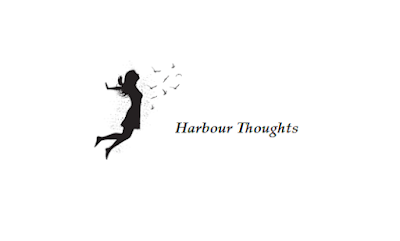Feuilles d'Automne
By Duncan Campbell Scott
Gather the leaves from the forest
And blow them over the world,
The wind of winter follows
The wind of autumn furled.
Only the beech tree cherishes
A leaf or two for ruth,
Their stems too tough for the tempest,
Like thoughts of love and of youth.
You may sit by the fire and ponder
While darkness veils the pane,
And fear that your memories are rushing away
In the wind and the rain.
But you'll find them in the quiet
When the clouds race with the moon,
Making the tender silver sound
Of a beech in the month of June.
For you cannot rob the memory
Of the leaves it loves the best;
The wind of time may harry them,
It rushes away with the rest.
Poem Analysis:
Duncan Campbell Scott’s poem Feuilles d'Automne (French for Autumn Leaves) is a poignant meditation on memory, time, and emotional endurance. Through natural imagery, especially the metaphor of falling leaves and the beech tree, Scott reflects on how some memories—particularly those tied to love and youth—persist even as time seeks to erase them.
Structure and Tone
The poem is composed of five quatrains (four-line stanzas), each with a clear and steady rhythm, giving it a contemplative and lyrical quality. The rhyme is mostly alternating or slant, lending a subtle musicality without drawing attention away from the message. The tone is reflective, melancholic, but ultimately comforting, as the poet affirms the resilience of cherished memories.
Gather the leaves from the forestAnd blow them over the world,The wind of winter followsThe wind of autumn furled.
This stanza introduces the natural cycle of seasons as a metaphor for the passage of time and fading experiences. The autumn leaves, carried by the wind, represent the dispersal of memories or moments. “The wind of winter follows” suggests an inevitable shift into coldness, silence, or perhaps even death—both literal and metaphorical.
Only the beech tree cherishesA leaf or two for ruth,Their stems too tough for the tempest,Like thoughts of love and of youth.
Here, the beech tree becomes a powerful symbol of emotional resilience. While other trees shed their leaves completely, the beech clings to a few—just as the human mind clings to its most treasured memories. The line “like thoughts of love and of youth” establishes that these lasting “leaves” are emotional in nature, tied to tenderness and personal history. The use of “ruth” (meaning pity or compassion) adds emotional depth and reinforces the theme of enduring sentiment.
You may sit by the fire and ponderWhile darkness veils the pane,And fear that your memories are rushing awayIn the wind and the rain.
This stanza captures a moment of introspection, where the speaker imagines the reader (or themselves) reflecting on life during a dark evening. There's a sense of anxiety or sadness about forgetting—the fear that precious memories are being swept away by the symbolic “wind and rain,” which echo the forces of time and change.
But you'll find them in the quietWhen the clouds race with the moon,Making the tender silver soundOf a beech in the month of June.
Here, the poem takes a hopeful turn. Even when it seems memories are gone, they return “in the quiet,” during a peaceful or dreamlike moment. The beech tree appears again, now not as a figure resisting the storm but as something serenely whispering, “making the tender silver sound.” This image evokes calmness and beauty, suggesting that deep memories resurface in stillness and calm reflection, often unexpectedly.
For you cannot rob the memoryOf the leaves it loves the best;The wind of time may harry them,It rushes away with the rest.
The final stanza is a declaration of emotional truth. Time may scatter much of what we hold dear, but the core memories—the “leaves it loves the best”—are immune to complete loss. The verb “harry” (meaning to attack or harass) underscores that time does attempt to erode memory, but its reach has limits. This is a reassurance that love, youth, and important emotional experiences leave a lasting imprint that resists even the strongest forces of change.
Themes
- Memory and Time: Time attempts to erase memories, but some remain resilient, cherished deep within.
- Emotional Permanence: Love, youth, and cherished feelings are likened to the beech’s stubborn leaves—they endure.
- Nature as Metaphor: The changing seasons and trees reflect internal emotional states and processes.
- Resilience of the Human Spirit: Despite loss, some aspects of the human experience remain intact and meaningful.
Symbols and Imagery
- Leaves: Represent memories or moments, especially those lost or scattered by time.
- Beech Tree: A central metaphor for resilience, emotional strength, and memory retention.
- Wind and Rain: Symbols of time, forgetfulness, and emotional turbulence.
- Moon and Clouds: Create an ethereal, reflective setting where memories can return.
- Fire and Darkness: Represent comfort mixed with isolation and introspection.
Feuilles d'Automne by Duncan Campbell Scott is a deeply reflective and beautifully crafted poem that explores how memories behave under the pressure of time. Through the evocative metaphor of autumn leaves and the symbolic beech tree, Scott affirms that while much in life is fleeting, some emotions and memories persist — cherished, protected, and resurfacing when least expected. The poem encourages the reader to trust in the enduring power of meaningful experience, offering both solace and insight into the human condition.
